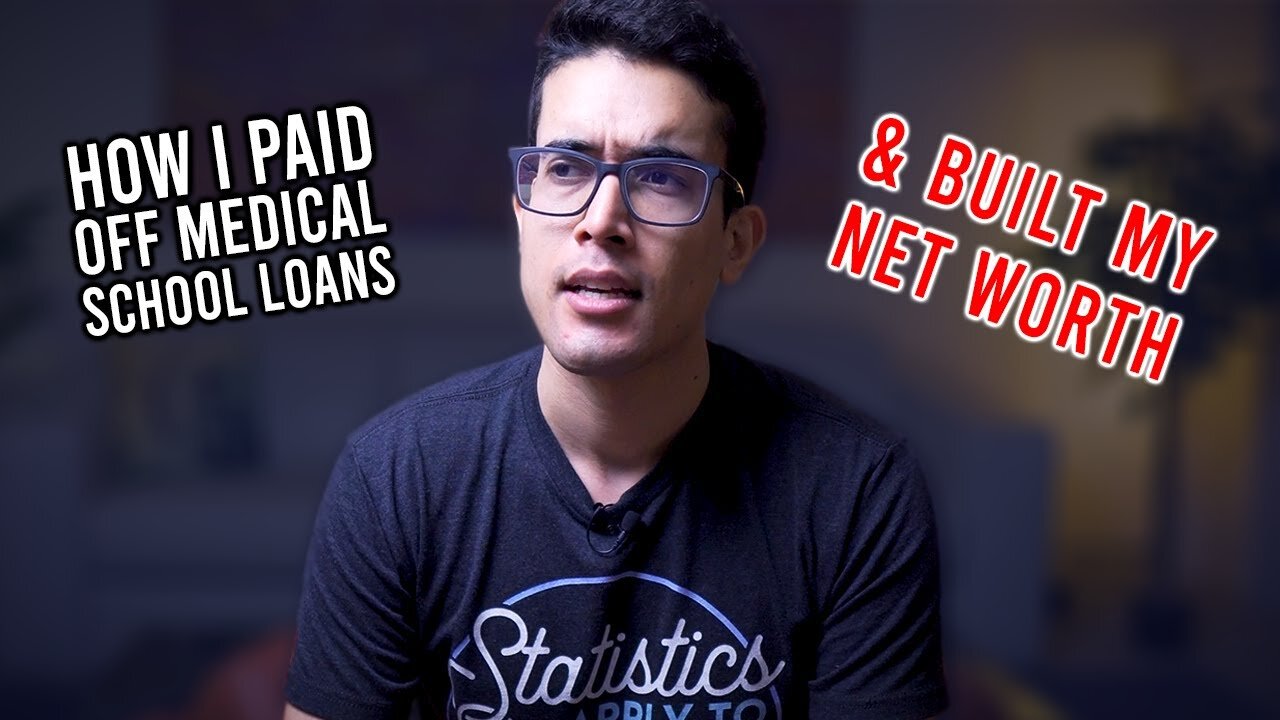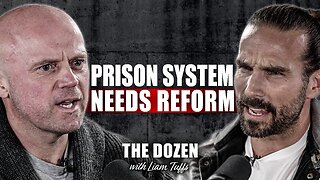Premium Only Content

How I Paid Off My Med School Loans & Investing Strategy
When it comes to money, there's a lot of noise, not a lot of signal. After years of reading intensely about personal finance optimization and investing, this is the system that works best for me.
7 Smart Strategies for Paying Off Medical School Debt
Although earning your medical degree can lead to a fulfilling and high-paying career, it can also leave you with a pile of student debt. According to the Association of American Medical Colleges (AAMC), the median amount owed by indebted medical school students was $200,000 in 2022.
Fortunately, there are strategies for managing medical school debt, such as income-driven repayment and medical school loan forgiveness. If you’re feeling overwhelmed by your student loans, here are seven helpful strategies for how to pay off medical school debt.
1. Don’t defer medical school debt in residency
2. Choose an income-driven repayment plan
3. Look into forgiveness programs
4. Make extra student loan payments
5. Keep living like a resident
6. Apply a physician signing bonus to medical school debt
7. Refinance your medical school loans
1. Don’t defer medical school debt in residency
Many medical school graduates choose deferment for federal student loans during their medical residency, thereby pausing repayment. Yet their unsubsidized medical school debt will still accrue student loan interest, which will capitalize once the deferment ends. So while deferring medical school debt in residency might lower your student loan stress now, it could come at a significant cost later.
On a $200,000 balance with a 5.3% interest rate, for example, deferring student loans for a three-year residency would add $31,800 in accrued interest. The new balance would be $231,800, with monthly payments of $2,492 on a 10-year payment plan ($342 more than what the monthly payments would be without the deferment).
Deferring student loans while in residency can have a lasting negative financial impact, so it’s best to avoid doing it if you can. However, if you’re earning the typical first-year resident salary of around $60,000, you may need to enter deferment in order to have sufficient funds to cover your living expenses and prevent student loan default.
If you decide to defer your student loans, try to pay some of the accrued interest in the meantime. This will keep your balance from ballooning too much between now and the completion of your residency.
Before you commit one way or the other, use our student loan deferment calculator to determine how much interest you might accrue during deferment.
2. Choose an income-driven repayment plan
As mentioned above, you may struggle to afford the monthly payments on your medical school debt during residency. However, an income-driven repayment (IDR) plan can help. Income-driven repayment plans could result in lower monthly payments for residents with high medical school debt.
When it comes to federal student loans, there are a few payment plan options that set payments to match your income. Revised Pay As You Earn (REPAYE), an IDR plan that generally caps payments at 10% of your discretionary income, might be the best deal for your situation. For a single resident that owes $200,000 at a 5.3% rate and earns around $60,000, monthly payments would be set at about $349 under REPAYE.
In addition, this repayment option offers a subsidy on your student loan interest. Essentially, the federal government will cover 50% of all interest due above the monthly payment amount throughout unsubsidized loan repayment. This subsidy can yield significant savings over the life of the loan and could help you pay off your medical school debt faster.
To see how REPAYE may be able to help you take control of your medical school debt, check out our REPAYE Calculator.
3. Look into medical school loan forgiveness or repayment assistance programs
If you have a low income compared to your medical school debt, pursuing student loan forgiveness for doctors could make the most sense for you.
Public Service Loan Forgiveness (PSLF) offers student loan forgiveness after 10 years for physicians working for public service employers. Many physicians might qualify for PSLF if they work in:
A public or nonprofit hospital
Academia
The public health sector
The military
You may also want to check for other state and federal programs that could help you repay your debt. Many of these programs will put money toward your medical school student loans based on the number of years of service you provide. For example, one initiative in Kansas helps new physicians wipe out up to $26,000 of medical school debt per year if they commit to 36 consecutive months of serving a rural community.
While working in public service can be rewarding on a personal level, it does often require you to serve in low-paying positions and/or undesirable locations. The trade-off is that you not only earn loan forgiveness but also help people who need it.
Of course, not every doctor is going to work in public service or qualify for PSLF. In this case, if you still want to pursue student loan forgiveness, consider enrolling in an income-driven repayment plan. They not only cap payments as a percentage of your income, as mentioned above, but also award forgiveness of your remaining loan balance after 20 to 25 years of payments — if there’s anything leftover.
Before making your decision, do the math and compare options to see if student loan forgiveness would be worth it for you.
4. Make extra student loan payments
Paying extra (or even the standard monthly amount) may be tough for you to do right out of medical school or while in residency.
But once you can afford to, making extra payments on student loans can help you pay off your medical school debt faster. Not only does it shorten your repayment term, but it also lowers the amount of student loan interest you’ll pay. Ultimately, your debt will cost you less.
Take some time to project your own savings from prepaying student debt with this calculator and see if this is a beneficial strategy for you.
5. Keep living like a resident
To keep up with extra payments on medical school debt, you need to make them a top financial priority. That means keeping your living expenses and discretionary spending low. Even though you’ll be making a better salary once you’ve completed your training, you might consider continuing to live like a resident.
In other words, make the most of your doctor’s salary as an attending by keeping your lifestyle in check. You’ve probably already been doing that as a resident, so try to keep it up for the next few years.
Ultimately, if you can spend like a resident while making three times more (or higher) as an attending physician, your expenses will comprise a smaller portion of your take-home pay. This will help you devote a more substantial portion of your income to paying extra on your student loans.
6. Apply a physician signing bonus to medical school debt
Physician signing bonuses are common benefits offered to attract doctors. In fact, more than 80% of physicians received signing bonuses in 2018, according to the 2019 Physician Placement Report from The Medicus Firm, with the average bonus amount approaching $34,000.
If you can snag one of these bonuses, it could go a long way toward paying off your medical school debt. Throwing this lump sum at your loans can shorten your repayment period and save you money in interest payments.
So, before you spend your signing bonus, use this extra payment calculator to see the impact it could have on your financial future.
And, even after your signing bonus is in the rearview mirror, consider applying any future “extra” income, such as raises, tax refunds or performance bonuses, to your student debt. If you consistently employ this strategy, that medical school debt will be decimated in no time.
7. Refinance your medical school loans
For many doctors, interest rates on their medical school debt is a major pain point.
In fact, even though they’ve been recently reduced, fixed interest rates on federal student loans for graduate programs, including medical school, are typically 1.55% to 2.55% higher than interest rates on undergraduate student loans.
Since medical school debt typically has both high balances and high interest rates, the opportunity to save can be big. Some of the best student loan refinancing lenders offer APRs as low as 1.89%*, so it definitely pays to shop around — especially if you now have a lower debt-to-income ratio and a higher credit score.
To see how much you could potentially save each month, check out our student loan refinancing calculator and plug in your info.
Keep in mind, though, that refinancing student loans has its trade-offs — no matter what you studied in college. If you refinance federal student loans, you will lose access to federal loan protections, including student loan forgiveness options, deferment protections and income-driven repayment plans.
TIMESTAMPS:
3:51 - My Approach to Finances in College & Medical School
7:06 - How I Recommend You Approach Finances
09:06 - My Current Approach
loans & investing strategy for beginners
what is investment
loans & inrategy strategy 2022
Types of Investment Strategies
What is the investment strategy of using borrowed?
What is a loan investment?
#loans #investingstrategy #investing
-
 45:39
45:39
Survive History
13 hours ago $3.76 earnedCould You Survive in the Shield Wall at the Battle of Hastings?
38.7K5 -
 1:50:28
1:50:28
TheDozenPodcast
12 hours agoViolence, Abuse, Jail, Reform: Michael Maisey
82.3K4 -
 23:01
23:01
Mrgunsngear
1 day ago $4.41 earnedWolfpack Armory AW15 MK5 AR-15 Review 🇺🇸
72.5K12 -
 25:59
25:59
TampaAerialMedia
1 day ago $2.26 earnedUpdate ANNA MARIA ISLAND 2025
44.2K4 -
 59:31
59:31
Squaring The Circle, A Randall Carlson Podcast
14 hours ago#039: How Politics & War, Art & Science Shape Our World; A Cultural Commentary From Randall Carlson
34.1K3 -
 13:21
13:21
Misha Petrov
14 hours agoThe CRINGIEST Thing I Have Ever Seen…
27K53 -
 11:45
11:45
BIG NEM
10 hours agoWe Blind Taste Tested the Best Jollof in Toronto 🇳🇬🇬🇭
18.7K1 -
 15:40
15:40
Fit'n Fire
13 hours ago $0.38 earnedArsenal SLR106f & LiteRaider AK Handguard from 1791 Industries
16.3K1 -
 8:34
8:34
Mike Rowe
6 days agoWhat You Didn't Hear At Pete's Confirmation Hearing | The Way I Heard It with Mike Rowe
53.7K23 -
 7:13:44
7:13:44
TonYGaMinG
14 hours ago🟢LATEST! KINGDOM COME DELIVERANCE 2 / NEW EMOTES / BLERPS #RumbleGaming
73.5K4